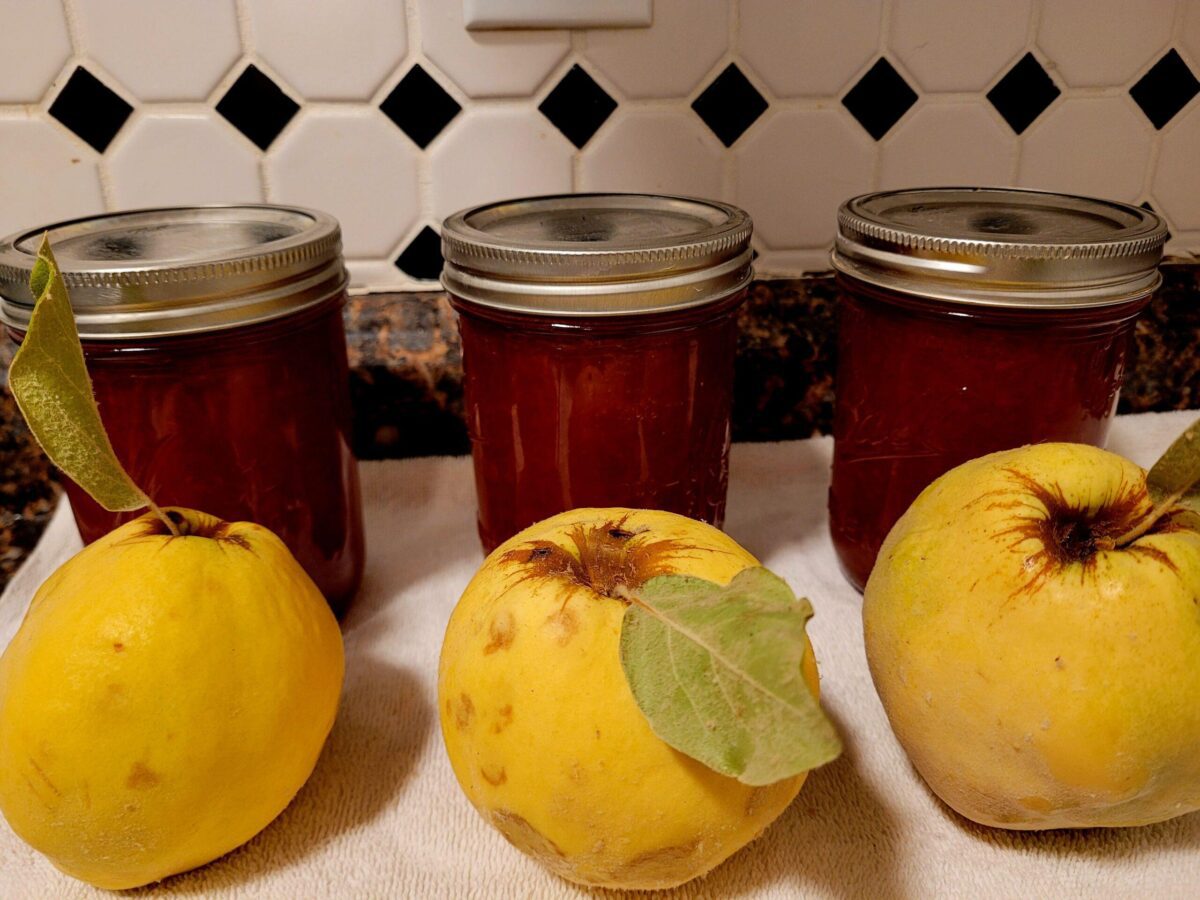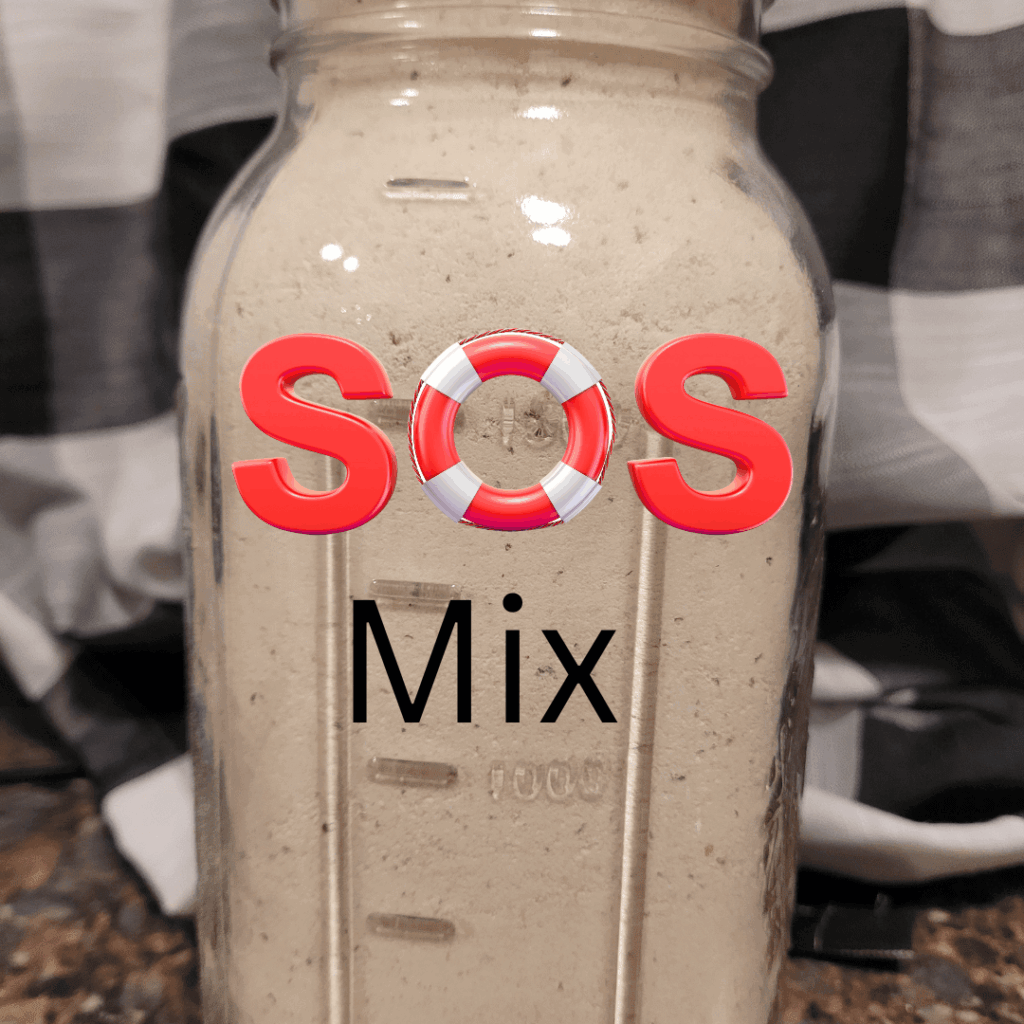Learn how to can a year’s supply of quince jam with this step-by-step guide. From preparing fresh quince to proper canning techniques, you’ll discover how to stock your pantry with delicious homemade jam that lasts all year. Perfect for homesteaders, self-sufficient families, and anyone who loves old-fashioned preserves.
There’s something deeply satisfying about filling your pantry shelves with jars of homemade preserves, each one holding the flavor of the harvest. Quince, with its golden skin and sweet, floral fragrance, is one of those old-fashioned fruits that transforms beautifully into jam. By learning how to can a year’s supply of quince jam, you’re not only creating a delicious spread for toast, pastries, and desserts, but also embracing a timeless tradition of self-sufficiency.
In this guide, I’ll walk you through everything you need to know—from selecting and preparing your quince to safe canning methods—so you can enjoy this unique fruit all year long.
This is a pinnable post. Tap or hover over any image in this post to pin to your Pinterest Boards.
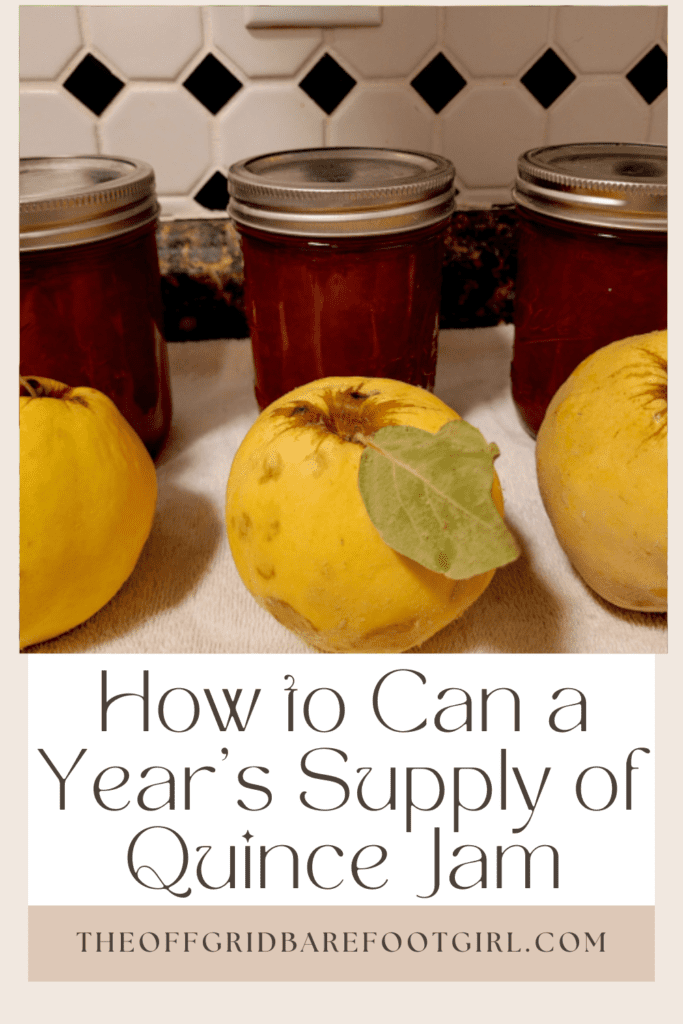
Recipe Ingredients and Equipment
- 10-15 quince fruit.
- 8 cups of water.
- 1 cup lemon juice.
- 8 cups sugar.
- 1 tablespoon cinnamon.
- 1 teaspoon vanilla extract.
- 7 pint jars.
- Water bath canner.
- Canning supplies (ladle, tongs, and funnel).
- Thick-bottomed pan.
- Crockpot (optional and my favorite way!)
What Is Quince
Quince is a fruit that takes the shape of a mix between a pear and an apple. When ripe, it takes on a yellow hue and has a wonderful floral aroma. Quince cannot be eaten in its raw form and must be cooked down to be edible, and it is so delicious!
When you slice into a raw quince fruit, it will be tough and white in the center, completely inedible. You must slice and peel the quince fruit and cook it down to become soft and sweet. When quince is cooked down, it turns from a white color to a rosy light to a dark color, the perfect texture, and color for jam!
To be quite real, quince will need to be cooked down for a long time before it is even edible and fit for a jam recipe. However, I found that using a crockpot or an electric roaster is a lifesaver for this project!
I noticed that they take quite a bit longer to cook than any other jam made from tender berries, and this is due to the fact that these raw quince fruits are tough to the core! They are in fact definitely worth the effort to make into this delicious jam recipe!
Harvesting a Quince Tree
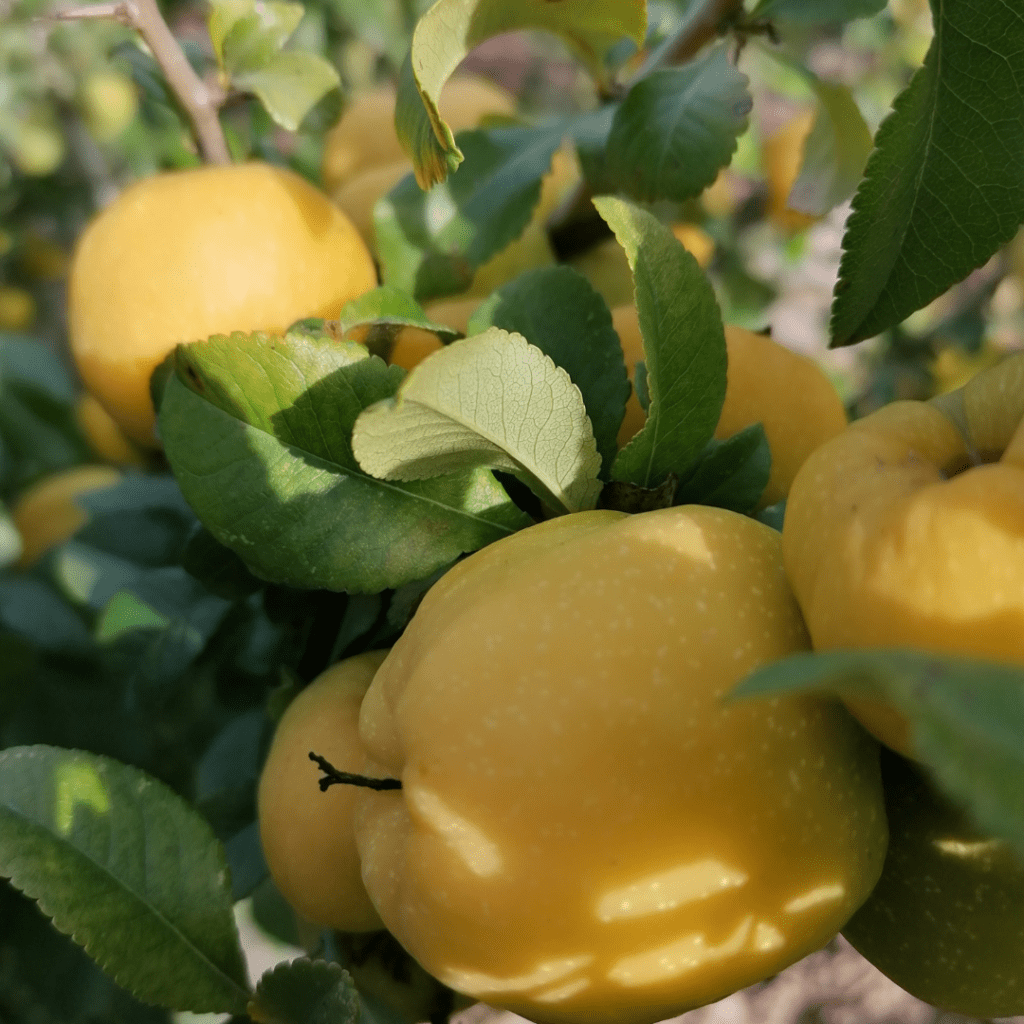
If you are lucky enough to have a quince tree in your yard (I am thrilled to have mine), then you can harvest enough quince jam for a year’s supply of quince jam. If you do not have a quince tree, then you can buy bulk quince at a farmer’s market during the quince season, which is anywhere from October to early November.
Quince picking begins at the end of summer and the beginning of fall, typically in October when the quince is fully ripe and rich yellow color. Harvesting should take place within a week and be preserved immediately, within one to two weeks. Pick a quince off the tree just as you would a pear or an apple. They are ripe when they are highly fragrant and fuzzy on the outside. The fragrance of a ripe quince fruit will have a wonderful floral aroma.
To learn more about growing your own quince fruit, visit my other post, All About Quince Trees: Ultimate Guide.
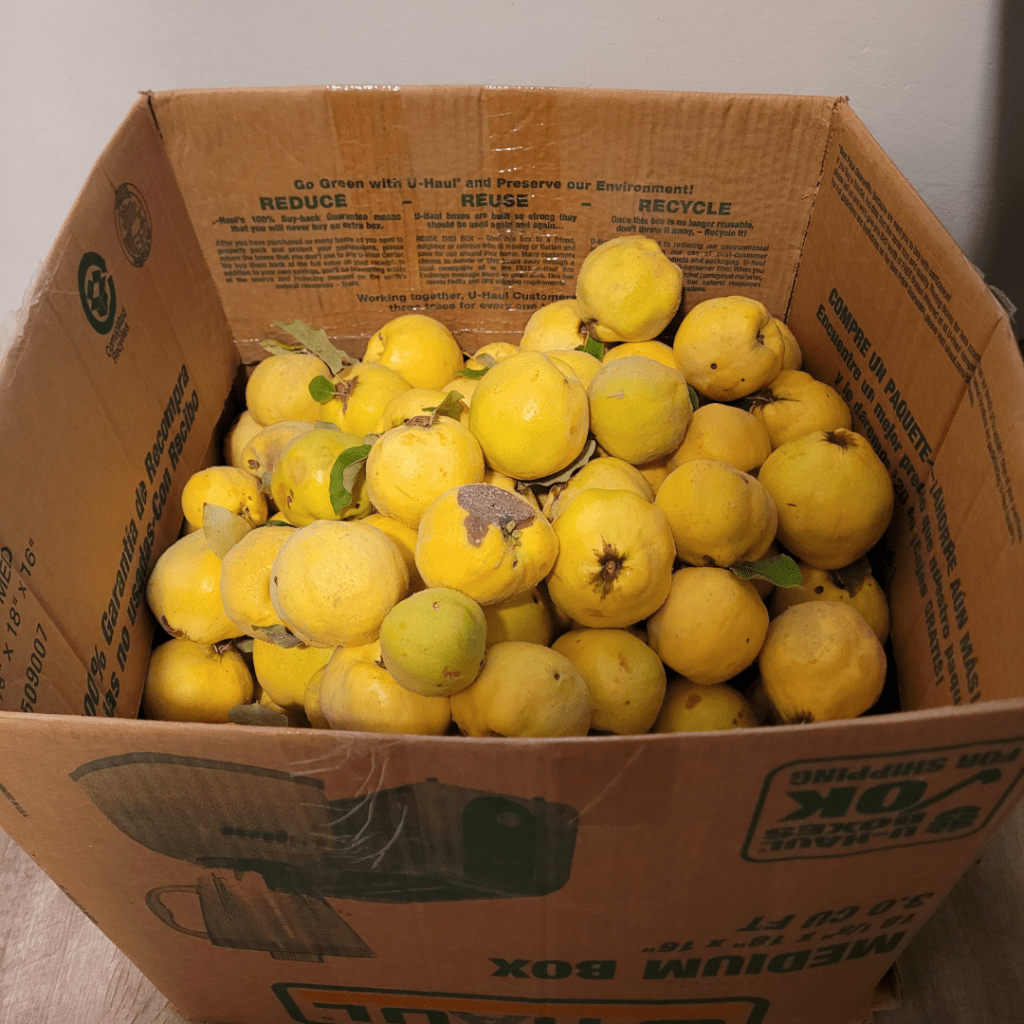
Canning Quince Jam
It is best to can your quince jam in batches for a proper gel set.
For a year’s supply of quince jam, which is what a quince tree can typically provide, expect to can approximately 160 pint jars of delicious quince jam to stock in your pantry or share as gifts if that is too much for you! They make beautiful holiday gifts!
Can as many batches as you want or need for your pantry. One batch makes 7 pint jars of quince jam, which takes approximately 10-15 quince fruit. It may help when buying your quince from the market to determine how many quince jam jars you want to stock up on by calculating it this way. However many quince jam jars you want to stock in your pantry, remember it takes about two quince fruits per one pint jar.
So buy however many quince fruits for however many jars you want to make quince jam. This is the easiest way for me to calculate how much quince jam I want to can. Though I typically just can my whole tree, which provides a bountiful harvest of approximately 160 to 200 quince fruit.
I can other jams, so this amount of quince jam in my own pantry is way too much. I still keep a good amount of quince jam on my pantry shelves because my kids love it. I give a lot of my quince jam to my neighbors who stare at the quince tree in wonder all year long while doing their yard work, who have questioned the beauty of this tree with its gorgeous spring blooms, and gaze upon the developing golden fruit. They love it!
Preparing the Quince
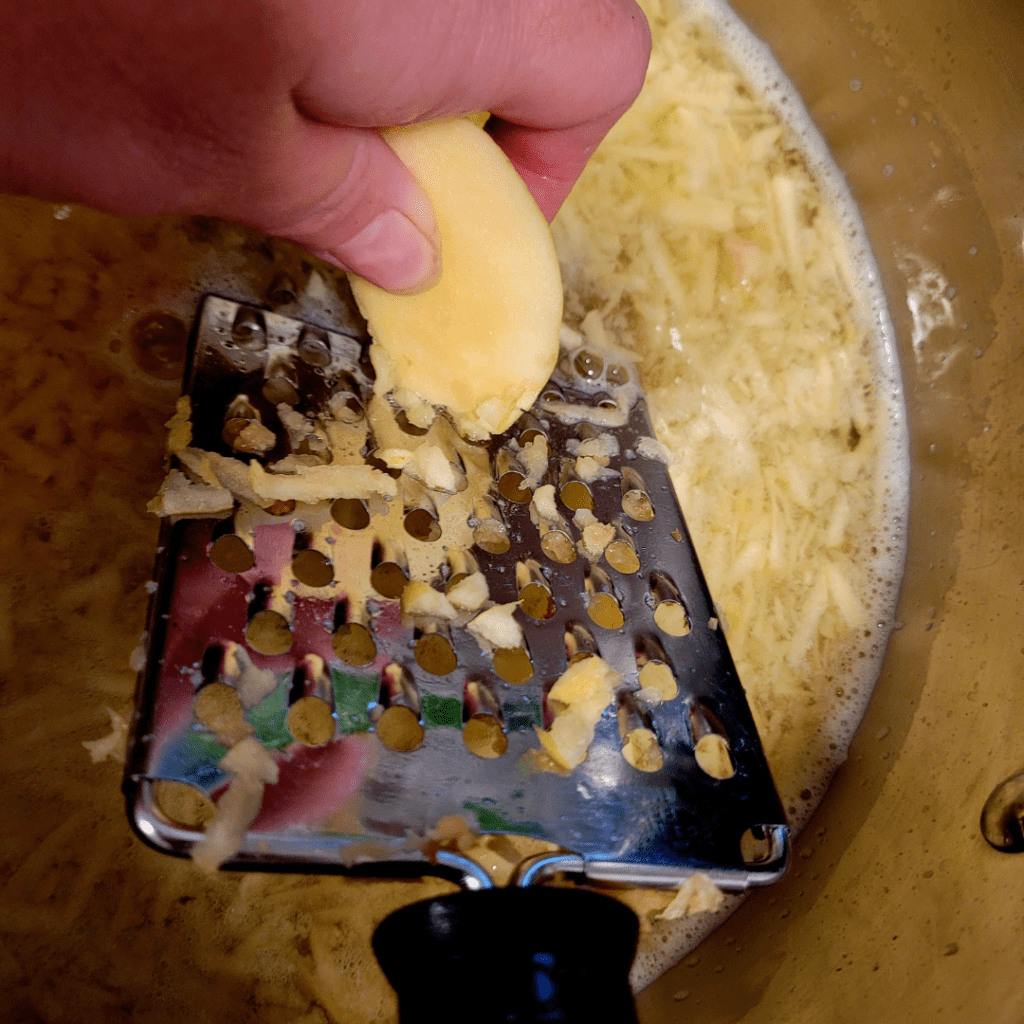
To prepare the quince for canning the jam, slice up each fruit, cutting away the bad parts, cores, and seeds. Keep the discards in a separate bowl, though, for canning the pectin, which is what this tree was grown for in the early centuries! More on this later.
Since quince takes a really long time to cook down, this process can be quickened by using a food grater or food processor to shred the fruit. Put on a good podcast for this step! If you need to, get out your food processor for this step.
UPDATE: I no longer grate mine and find that chopped quince will cook down and blend with an immersion blender just fine! I found this out after a few years of canning quince jam!
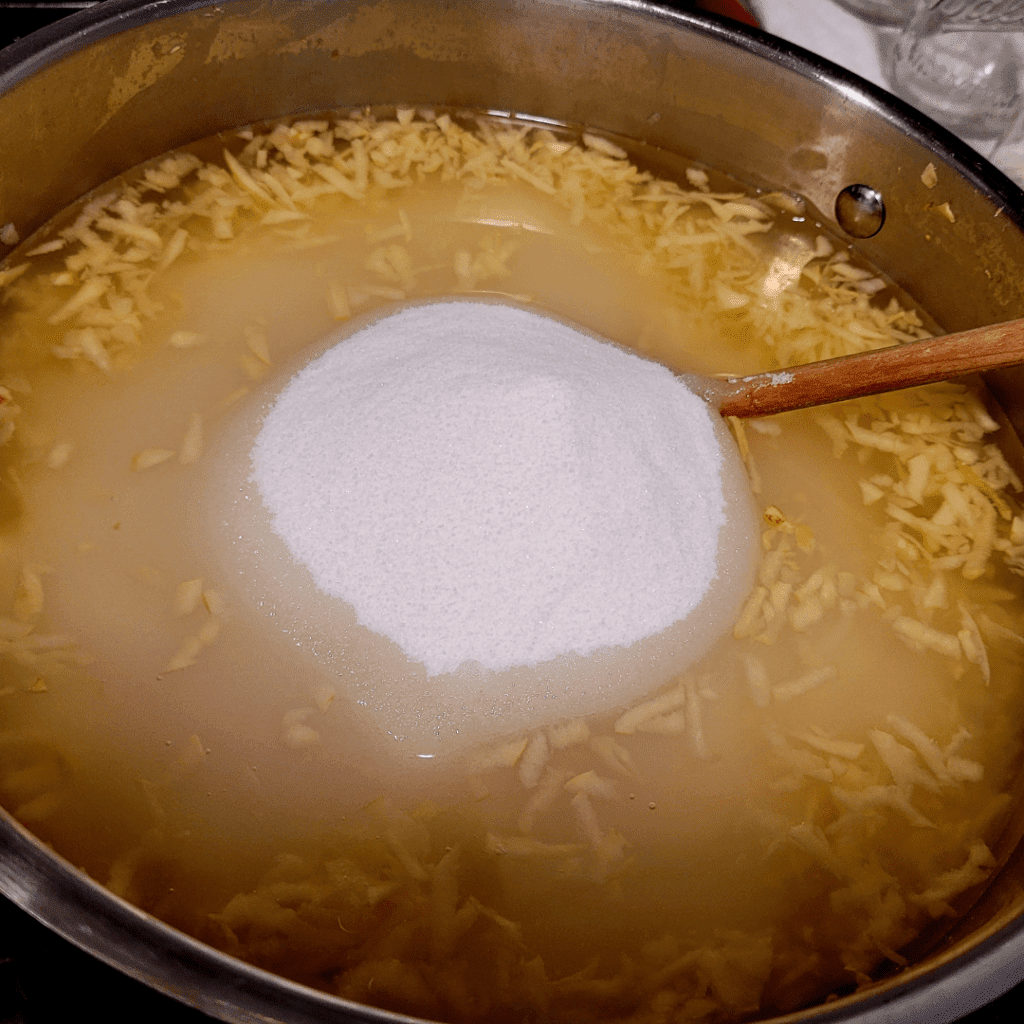
Add the shredded quince to the amount of water specified in the recipe in a thick-bottomed pan. I add the sugar and lemon juice while I cook down my quince fruit. If you cook your fruit in chunks, it is best to wait to add these ingredients during the cooking process until the quince is broken down enough. This is another season I shred my quince raw first. It really does speed up the cooking process!
Trust me on this one! I own a quince tree that gives me over 300 pounds of quince fruit each year, so I had to learn how to can them fast!
Cooking the Quince
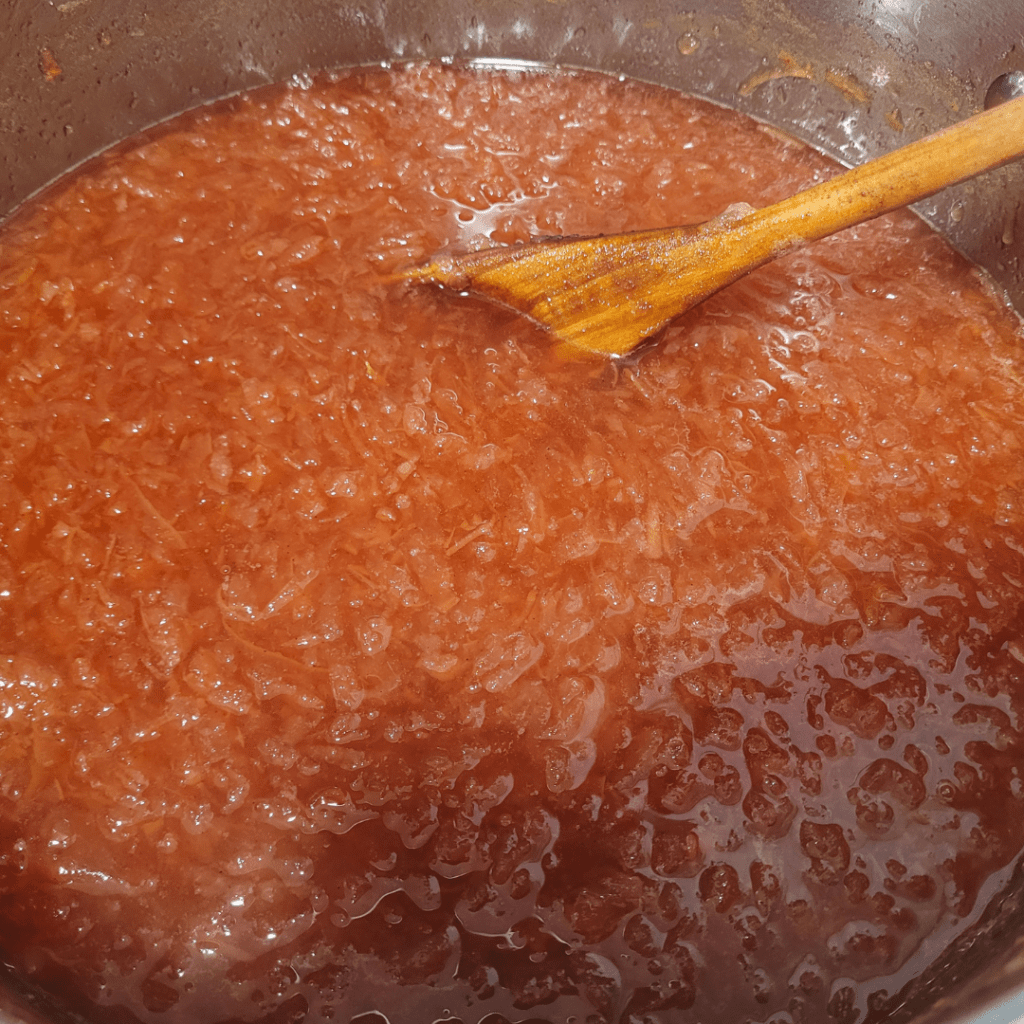
It takes approximately thirty minutes for the quince to start to gel and form the quince jam on the stovetop. You need to babysit it and occasionally stir it. This is why I cook mine in a crockpot! I will discuss the crockpot method in a minute.
Throughout the cooking process, add some warm winter spices and give them a good stir. You can add vanilla flavoring and cinnamon if you want. Though the quince jam will be just as delicious with just the sugar and lemon juice! However, these spice additives do bring out the fall jam flavor for the holidays!
Cook Your Quince Jam All Day with Your Crockpot!
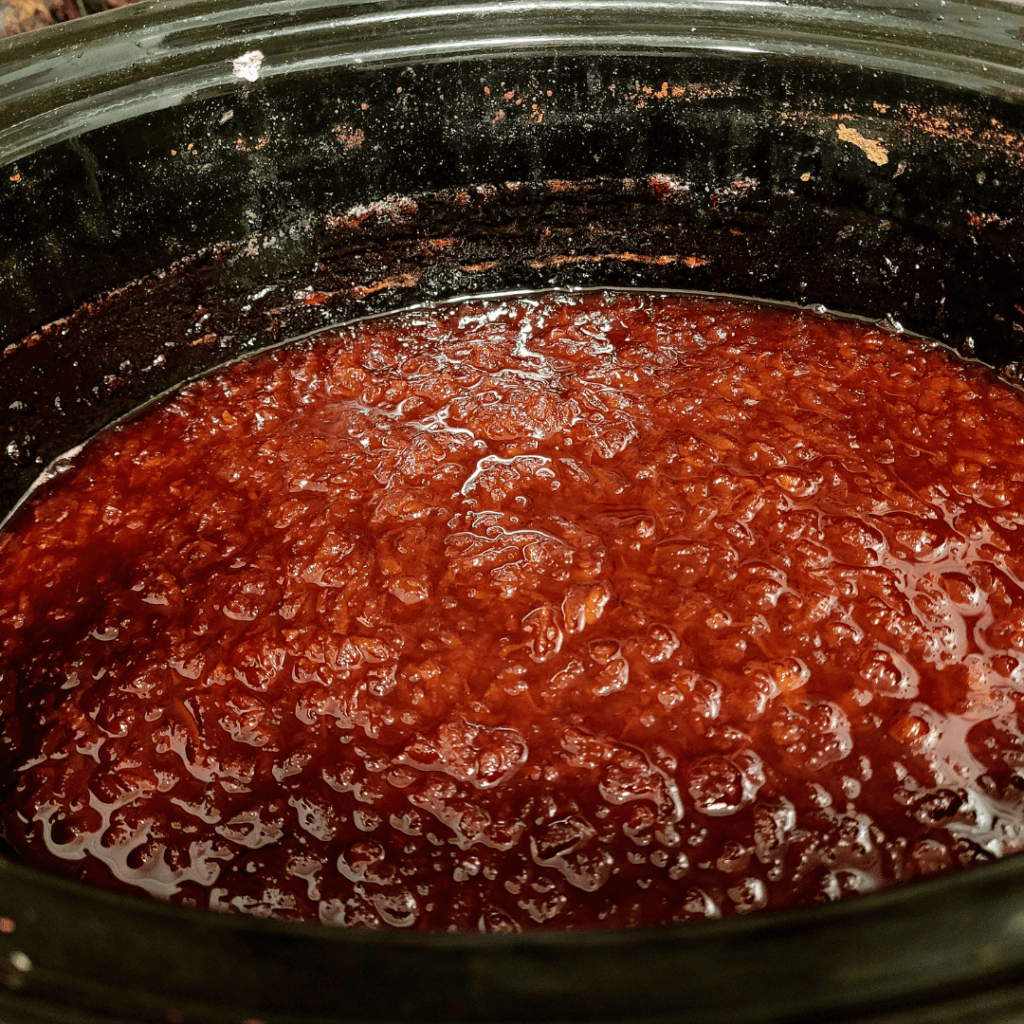
If you really want a hands-off approach to cooking quince jam through the busy canning season, cooking it down in your crockpot is fun and easy! I have loved just tossing the shredded or chopped quince, water, lemon juice, and sugar in the crockpot early in the morning, adding spices for flavoring, and stirring it once in a while as I walk by.
Once the jam is ready and gelled, you can quickly can it up in the evening. I even had some quince shreds in my freezer and dumped them in my crockpot with the rest of the ingredients before I had to leave for work early in the morning, and came home to beautifully cooked quince jam that was ready to can that evening.
Any simple tricks to help me survive a busy canning season are so helpful for me, and I thought I’d share them with you.
About thirty minutes before the cooking is complete, heat up your water bath canner since it will take some time to do that part. Don’t forget to add your empty pint jars without the lids to the canner to warm up with the water.
Testing the Quince Jam Before Canning (The Gel Test)
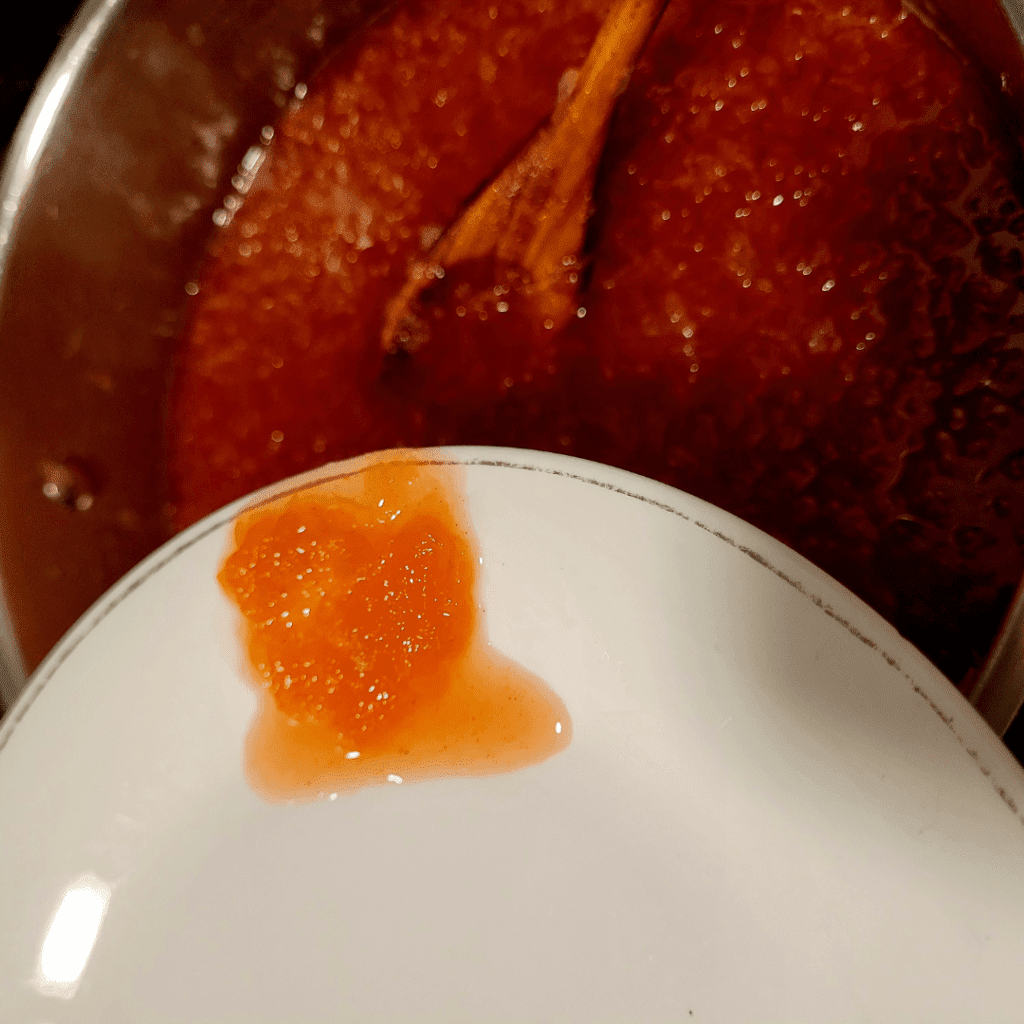
To test to see if the jam will gel and set before canning, grab a small plate and spoon. Put a drop of quince jam on the plate and let it sit for a few minutes. Then tip the plate slightly to see if it sets or runs down the plate.
If it sets like jam and does not run, then the cooking part is done. If it is too runny, then you need to keep cooking it until it sets firmly on the plate while tipped without running down.
Warming Up Your Batch of Jars
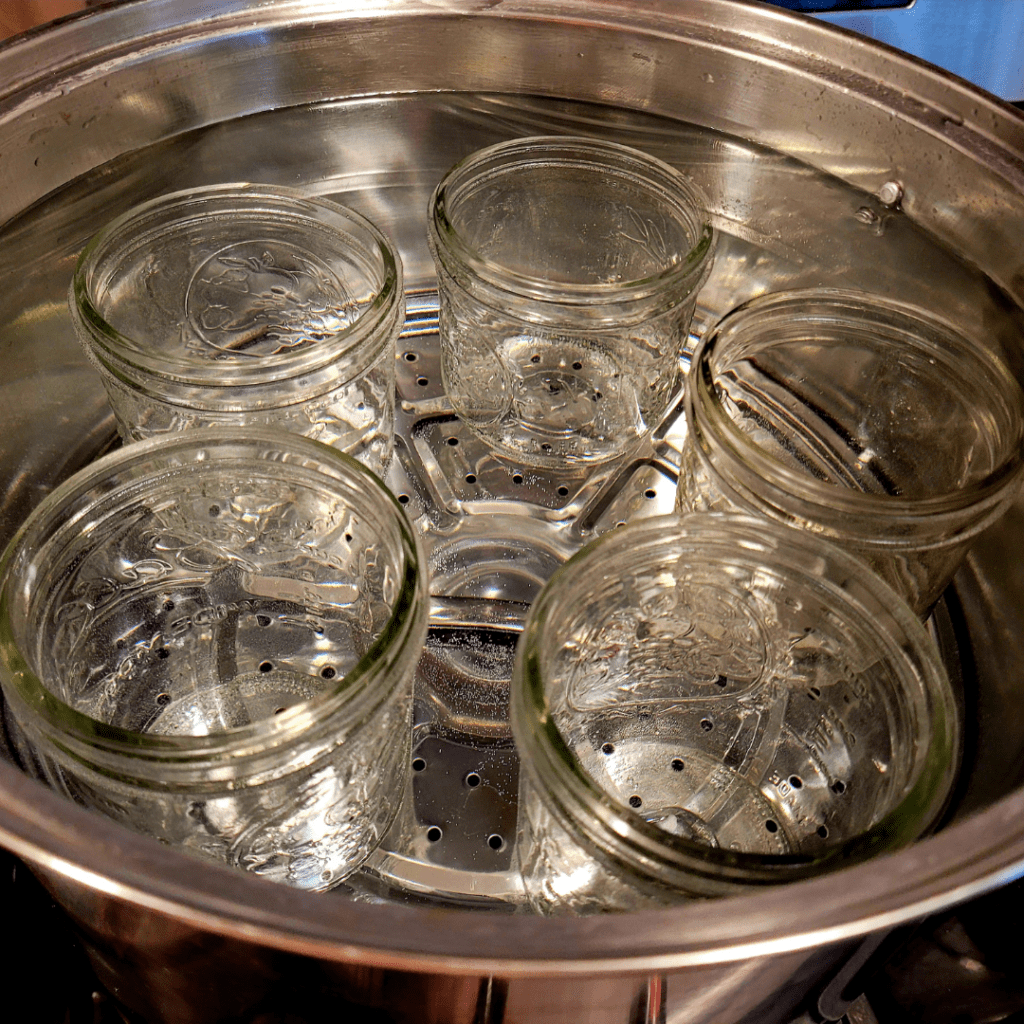
Place your pint jars into your water bath canner, which is enough for one batch of jam. While some people attest to skipping this step, I still like to keep my jars from shattering when I place the hot jam into the jars. I want my jars warm before adding the hot jam first.
To warm up the jars, I place them in the clean water bath canner at the same time I am heating up the water for thirty minutes. If you have forgotten to add them to the canner when you first started heating it up, it is still okay to add them to the canner for a few minutes to heat them up.
Filling Up the Jars with Quince Jam
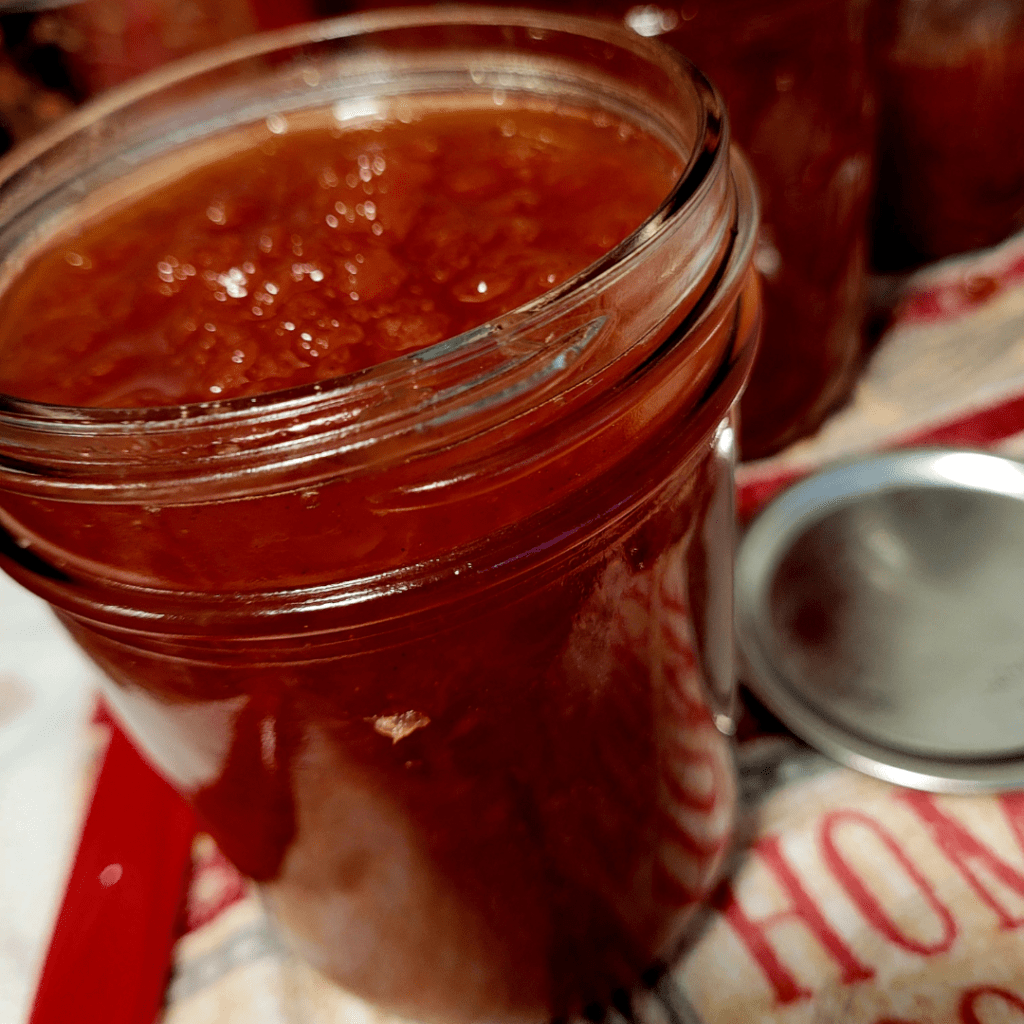
Using your canning funnel and ladle, fill each jar with quince jam, leaving 1/4 inch of headspace. Wipe the rims clean and place a lid, and screw them on until finger-tight.
The jars will be pretty hot, so take care of how you handle them. Do not pick them up with your bare hands as you may burn yourself and drop and shatter a jar, which will be okay, but also devastating. Always use the canning tongs when handling hot jars for safety!
Adding the Jars to the Canner
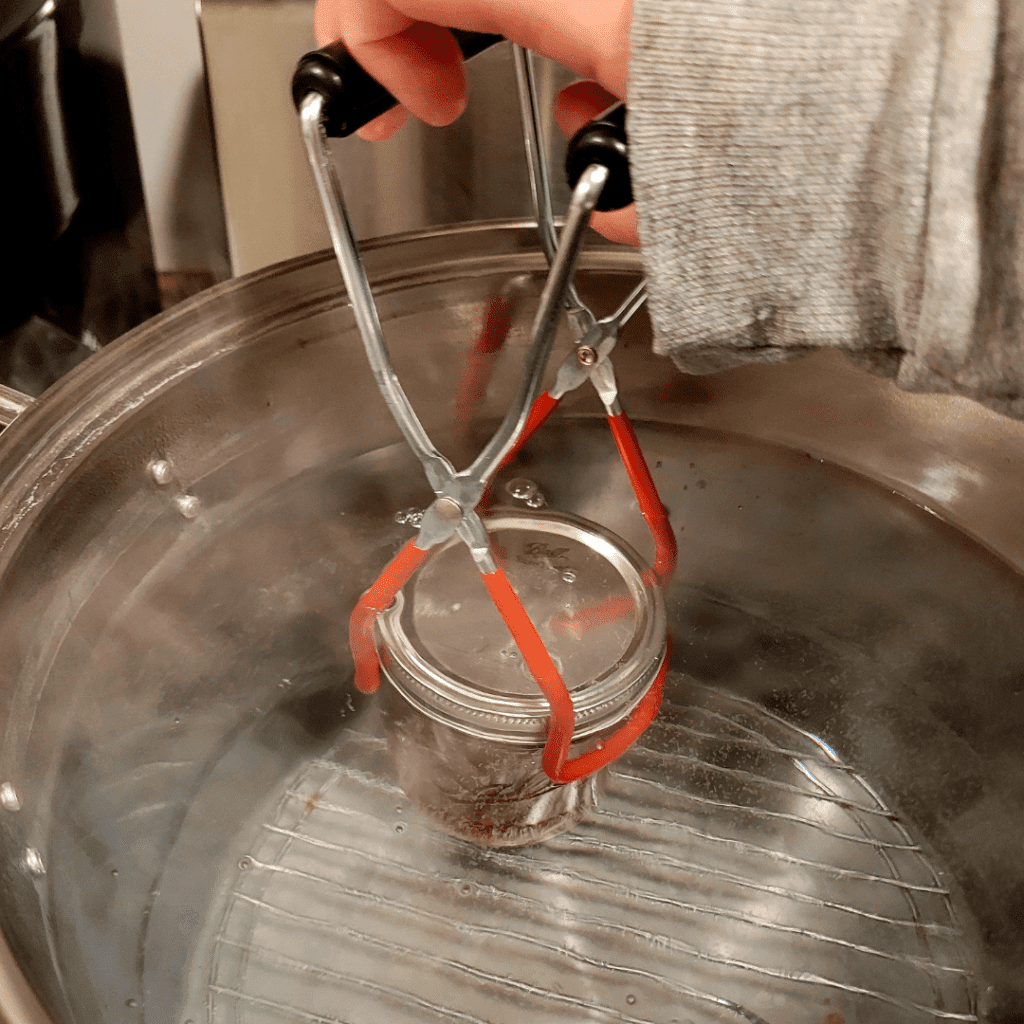
Carefully add each jar to the water bath canner using the canning tongs.
TIP! If you use an aluminum canner as I do or have hard water, you may find the water makes it rusty or cloudy, which is very unpleasant. Add a few tablespoons of white vinegar or cream of tartar to the water bath canner, and it will help clear the water perfectly.
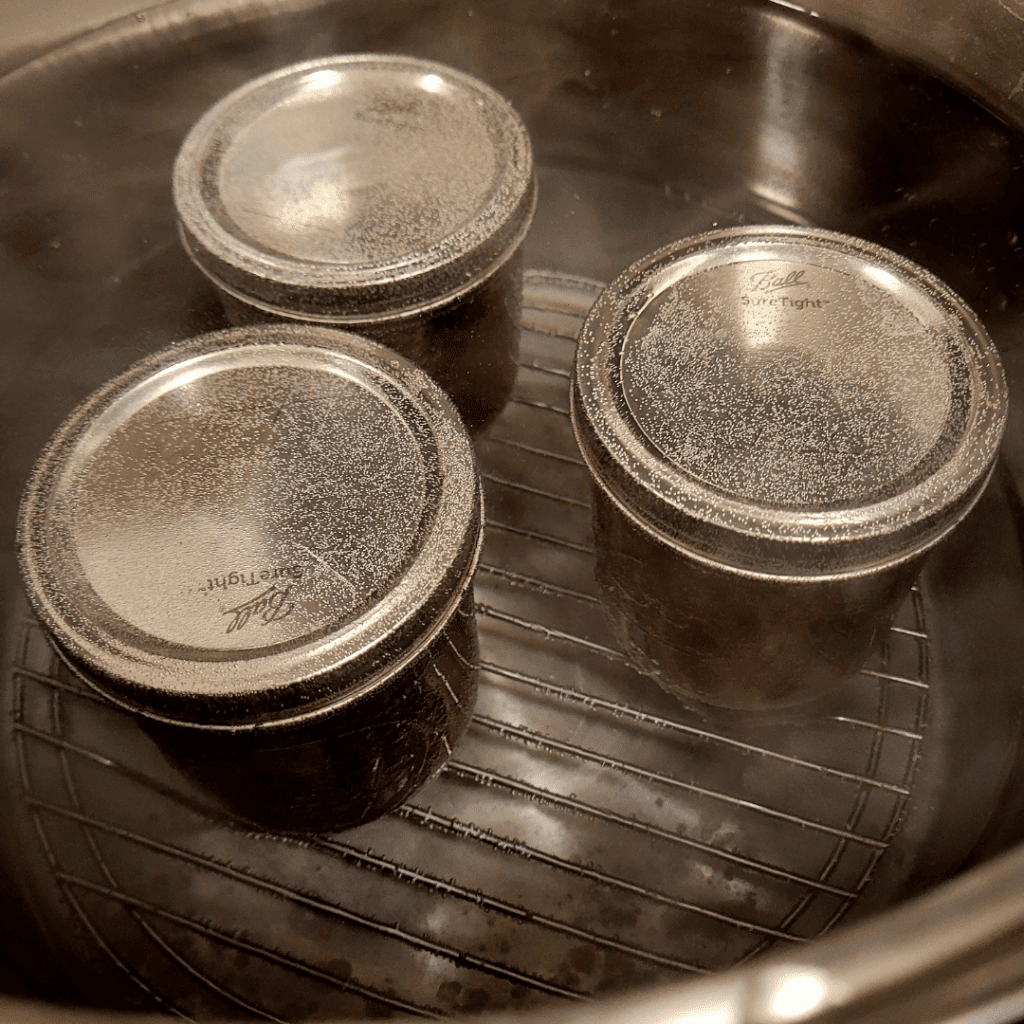
Be sure to leave one inch of water above the jars while canning. The water will rise each time a jar is placed. Sometimes I have had to take cupsful out of the canner once my whole batch was in there, as it was too much water.
Water bath your quince jam according to your elevation. For me, it takes approximately thirty minutes at a rolling boil.
You can grab my water bath canning altitude chart I created using the link provided.
FREE Water-Bath-Canning-Altitude Chart
Removing the Jars From the Canner
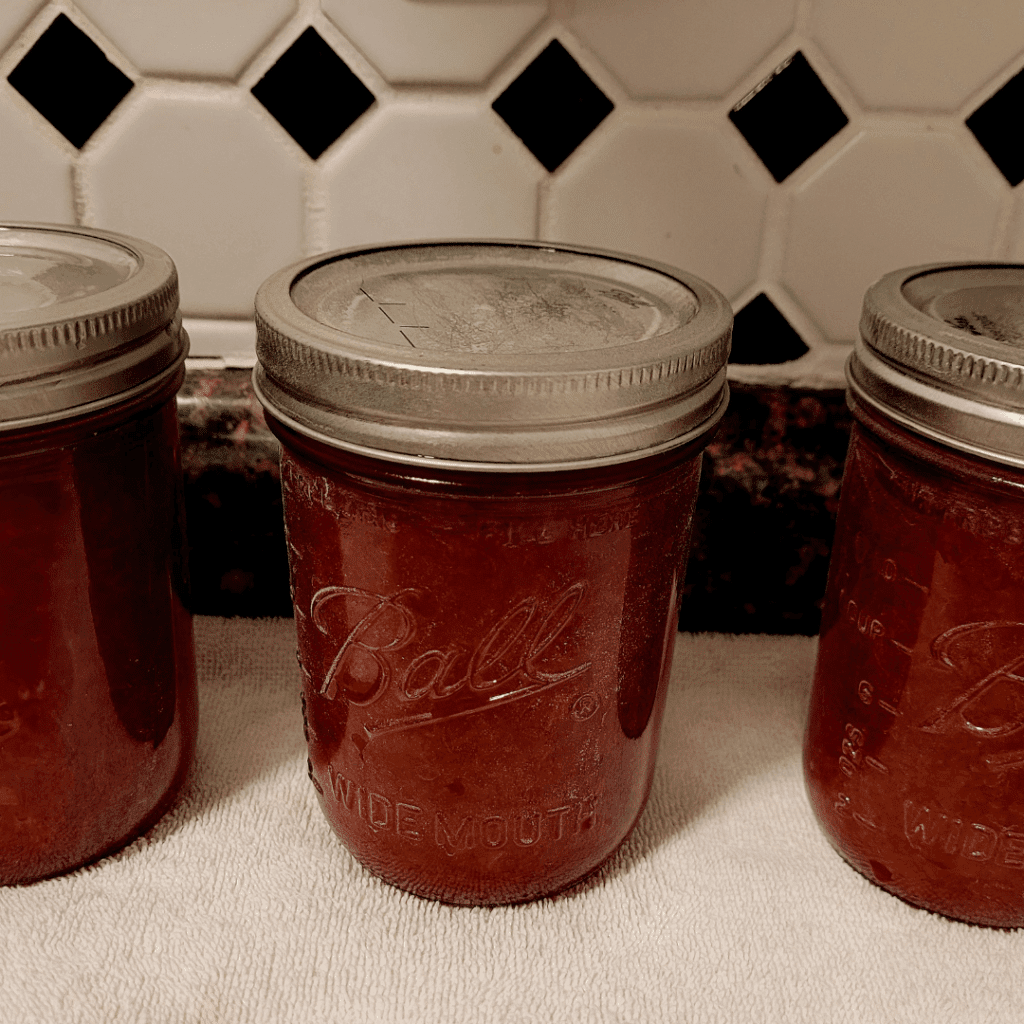
Once the canning time is up, remove each jar carefully from the water bath canner and place them on a towel on the counter where they will be undisturbed for the next twenty-four hours.
It is necessary to place them on a towel rather than on the cold counter to prevent the hot jars from shattering.
You can label the jars however you want to by using labeling stickers or just a marker.
I find that each batch of quince jam will vary in color according to the cooking time. Quince turns from a pale white color to light to dark shades of pink to red. The color does not determine the quality of the jam or fruit. It is just the result of the cooking time and how its color changes during the cooking process. To me, this is the magic of the quince fruit.
Conclusion
In conclusion, canning a year’s supply of quince jam is a rewarding process that allows you to enjoy the unique, fragrant taste of quince all year long. By following these simple steps, you can preserve the essence of the season in every jar while ensuring a long-lasting and safe supply for your pantry.
Whether you enjoy quince jam on toast, paired with cheese, or used in your favorite recipes, the effort you put into canning will provide months of delicious enjoyment. Plus, there’s nothing quite as satisfying as seeing your shelves lined with homemade, beautifully sealed jars, ready to be savored or shared as thoughtful gifts. So, get canning and relish the fruits of your labor for the entire year!
Resources: Here are some helpful resources for further information.
- Rosy Poached Quince – By David Lebovitz
- Perfect Quince Jam – By Ramona’s Cuisine
- Cooking Quince Made Easy – By My Cancale Kitchen
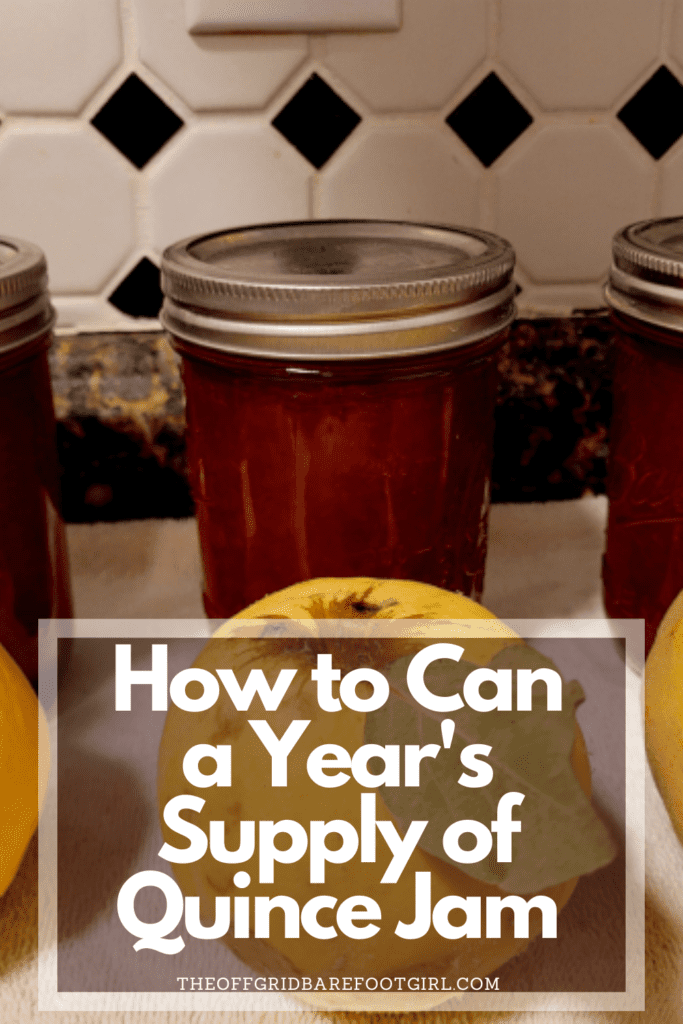
Frequently Asked Questions
1. How many quinces do I need to can a year’s supply of jam?
To can a year’s supply of quince jam, you’ll need approximately 15-20 pounds of fresh quince, depending on how much jam your family consumes. This amount typically yields 7-8 pints, which can last a year if you use other jams in your pantry.
2. What’s the best way to store canned quince jam?
Store your sealed jars of quince jam in a cool, dark, and dry place, like a pantry or cellar. Properly canned jam can last up to a year or longer. Ensure that the jars are kept away from direct sunlight and extreme temperatures to preserve quality.
3. Can I use less sugar or alternative sweeteners when making quince jam?
Yes, you can reduce sugar or use alternative sweeteners like honey or stevia. However, sugar helps with the preservation process and consistency of the jam, so adjusting it may affect the texture and shelf life. Be sure to use proper canning techniques and consider using pectin if needed.
4. How do I know if my quince jam has been sealed properly?
After processing, let the jars cool for 12-24 hours. The lids should be firm and concave, meaning they’ve sealed properly. If the lid pops when pressed, the jar is not sealed, and you’ll need to refrigerate it and use the jam within a few weeks.
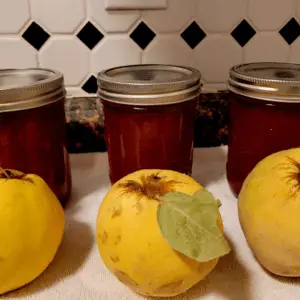
Quince Jam
Equipment
- 7 pint jars
- 1 water bath canner
- canning supplies (ladle, tongs, and funnel)
- 1 thick-bottomed pan
- 1 crockpot (optional)
Ingredients
- 10-15 whole quince fruit.
- 8 cups water.
- 1 cup lemon juice.
- 8 cups sugar.
- 1 tbsp cinnamon.
- 1 tsp vanilla extract.
Instructions
Preparing the Quince
- Slice up each fruit, cutting away the bad parts, cores, and seeds.
- Grate each slice with a food grater or place all slices in food processor.
Cooking the Quince
- Place the shredded quince fruit in a thick-bottomed pan or crockpot.
- Add the water, lemon juice, and sugar and stir until well combined. Add in your optional spices.
The Gel Test
- Cook until the quince jam has a nice gel set. To test this, add a small amount of jam to a plate and let it sit for a few minutes.
- Tip the plate slightly to test if the jam sits nicely in a thick goop or runs down the plate. If it runs down the plate, continue the cooking process until it sits on the tipped plate in a goopy form without running down.
Warming Up Your Batch of Jars
- When your quince jam is almost done, heat up your water bath canner with five pint jars without lids placed inside.
Filling Up the Jars with Quince Jam
- Using your canning funnel and ladle, fill each jar with quince jam leaving 1/4 inch of headspace. Wipe the rims clean and place a lid and screw them on until finger tight.
Adding the Jars to the Canner
- Carefully add each jar to the water bath canner using the canning tongs.
- Be sure to leave one inch of water above the jars while canning. The water will rise each time a jar is placed. Sometimes I have had to take cupsful out of the canner once my whole batch was in there as it was too much water.
- Water bath your quince jam according to your elevation. For me, it takes approximately thirty minutes at a rolling boil.
TIP!
- If you use an aluminum canner as I do or have hard water, you may find the water makes it rusty or cloudy, which is very unpleasant. Add a few tablespoons of white vinegar or cream of tarter to the water bath canner and it will help clear the water perfectly.
Removing the Jars From the Canner
- Once the canning time is up, remove each jar carefully from the water bath canner and place them on a towel on the counter where they will be undisturbed for the next twenty-four hours.
- It is necessary to place them on a towel rather than on the cold counter to prevent the hot jars from shattering.
- You can label the jars however you want to by using labeling stickers or just a marker.
Summary
I hope I have inspired you to stockpile your pantry for your survival needs.
If you were encouraged by this post, I invite you to check out my FREE Printables Page for fun free printables, planners, and charts.
ENTER MY FREE Printables Page HERE
Here are some more of my canning inspiration posts to check out!
Carrot Cake Butter: How to Make and Can Carrot Cake Butter
Peach Pie Filling: How to Make and Can Peach Pie Filling
Pear Pie Filling: How to Make and Can Pear Pie Filling
The Best Winter Pantry Staples to Stockpile Now!
Grapes: How to Make and Can Grape Jam
Apple Cider: How to Make Homemade Apple Cider Vinegar
How to Make and Can Cherry Plum Jam
How to Make and Can Apple Butter In Crockpot
Stockpiling Condiments for Survival: Learn How I Do It!
How to Make and Can Vegetable Pot Pie Filling
Easy Canning Applesauce Recipes to Stalk Your Pantry!
How to Make Peach Jalapeno Jam
Cherries: How to Make Cherry Pie Filling
Cherries: How to Make Cherry Syrup
Salsa: How to Make and Can Cherry Salsa
Peaches: How to Make and Can Peach Salsa
Canning Supplies You Need Now for a Successful Canning Season!
How to Make and Can Balsamic Onion Jam
Cranberry Sauce: How to Make and Can Old Fashioned Cranberry Sauce
How to Make and Can Cranberry Merry Jam
How to Make and Can Strawberry Shortcake Jam
Cherry Jam: How to Make and Can Cherry Pie Jam
Carrot Cake Jam: How to Make and Can Carrot Cake Jam
Quince Jam: How to Can a Year’s Supply of Quince Jam
Root Beer Float Jelly: How to Make and Can Root Beer Float Jelly
Blessings,
The Off Grid Barefoot Girl

